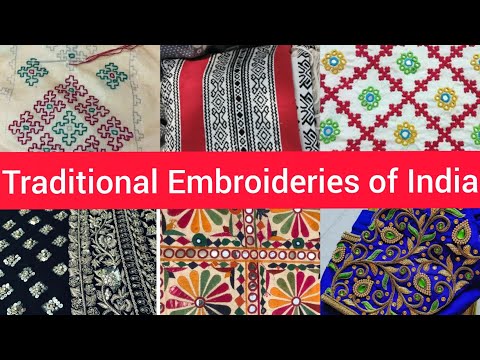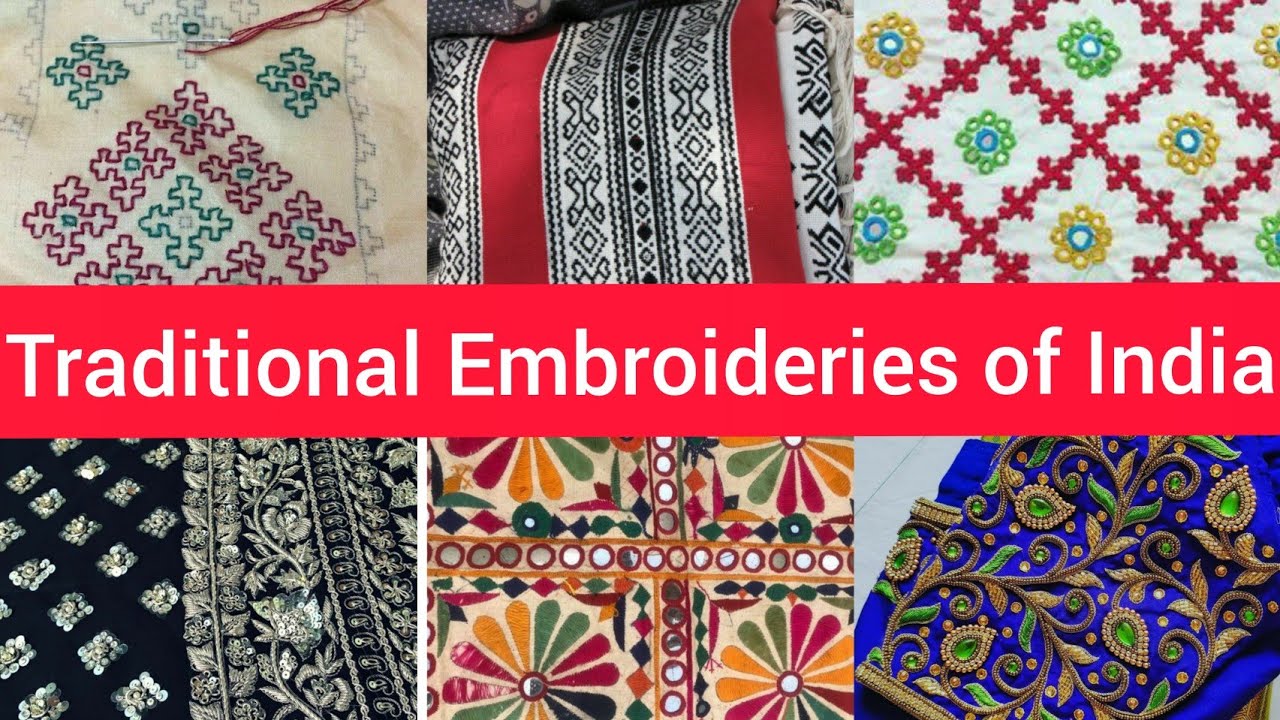Indian embroidery fabric is a magnificent tapestry of art and culture that has captivated the world for centuries. With its rich heritage and intricate craftsmanship, this fabric tells a story of India’s vibrant traditions and skilled artisans. Every stitch is meticulously woven by hand, using techniques passed down through generations, resulting in a masterpiece that showcases the beauty and elegance of Indian craftsmanship. From the delicate floral motifs to the elaborate geometric patterns, each design reflects the diverse cultural influences and regional styles of India. The embroidery itself is a labor-intensive process, involving the use of fine threads, beads, mirrors, and sequins, meticulously sewn onto various fabrics like silk, cotton, or velvet. The result is a mesmerizing work of art that seamlessly blends tradition with modernity, making it a sought-after choice for fashion designers, interior decorators, and art enthusiasts alike. Whether adorning a traditional saree, a contemporary dress, or even home decor items, the Indian embroidery fabric adds a touch of opulence and grace to any ensemble or setting. With its exquisite craftsmanship and timeless appeal, this fabric has become synonymous with luxury and elegance, making it a must-have for those who appreciate the beauty of Indian artistry. Experience the magic of Indian embroidery fabric and indulge in the captivating world of Indian textiles.

The Rich Tradition of Indian Embroidery Fabric
India is renowned for its exquisite textile heritage, and one of its most celebrated art forms is embroidery. For centuries, Indian artisans have showcased their mastery through intricate needlework, creating stunning fabrics that are coveted worldwide. Indian embroidery fabric is a testament to the country’s rich cultural diversity and artistic prowess.
The Origins of Indian Embroidery
Embroidery in India can be traced back to ancient times, with references found in the ancient scriptures of the Rigveda and Atharvaveda. The art form flourished under various ruling dynasties, such as the Mughals and the Rajputs, who patronized and promoted embroidery techniques. Each region in India developed its own distinct style, reflecting the local culture and traditions.
The Diversity of Indian Embroidery
One of the most fascinating aspects of Indian embroidery is its diversity. Each state in India has its own unique embroidery style, characterized by specific stitches, motifs, and colors. For example, the vibrant and colorful Phulkari embroidery from Punjab, the delicate Chikankari from Lucknow, and the intricate Kantha embroidery from West Bengal. These regional variations add to the charm and allure of Indian embroidery fabric.
Traditional Techniques and Stitches
Indian embroidery fabric is created using a variety of techniques and stitches, each requiring skill and precision. Some of the commonly used stitches include chain stitch, running stitch, mirror work, and zardozi. These stitches are intricately combined to form elaborate patterns and motifs, ranging from floral designs to geometric shapes. The use of metallic threads, beads, and sequins further enhances the beauty and opulence of the fabric.
Contemporary Adaptations and Innovations
While Indian embroidery has a strong foundation in tradition, it has also evolved with the changing times. Contemporary designers and artisans have embraced new materials, techniques, and designs to create unique and modern interpretations of Indian embroidery fabric. These adaptations have not only helped preserve the art form but have also made it relevant in today’s fashion industry, both in India and globally.
In recent years, Indian embroidery fabric has gained popularity among international fashion designers, who incorporate it into their collections. From haute couture runways to red carpet events, Indian embroidery is seen adorning the garments of celebrities and trendsetters worldwide. This recognition has further fueled the demand for Indian embroidery fabric, making it a sought-after choice for fashion enthusiasts and collectors.
Preserving the Legacy of Indian Embroidery
Despite its popularity, Indian embroidery fabric faces challenges in the modern era. Mass production, machine embroidery, and the availability of cheaper alternatives have posed a threat to the artisans who painstakingly create these fabrics by hand. There is a need to recognize and support the craftsmen and women who continue to preserve this centuries-old tradition.
Various organizations and initiatives have been established to promote and protect Indian embroidery. Government schemes, craft clusters, and NGOs are working towards empowering artisans, providing them with training, financial support, and market access. By encouraging sustainable practices and fair trade, these efforts aim to ensure the survival and sustainability of Indian embroidery fabric.
In conclusion, Indian embroidery fabric is a reflection of India’s rich cultural heritage and artistic tradition. Its diversity, intricate techniques, and vibrant motifs make it a true marvel of craftsmanship. By appreciating and supporting this art form, we can help preserve its legacy and ensure that future generations continue to be mesmerized by the beauty of Indian embroidery fabric.
Unveiling India’s Rich Tapestry: A Guide to Traditional Embroideries and their Origins
Video Source : Fashion with Charu
Indian Embroidery Fabric
Indian Embroidery Fabric
| Embroidery Technique | Region | Famous for |
|---|---|---|
| Kantha | West Bengal | Kantha stitching creates intricate patterns on lightweight cotton fabrics, primarily used for sarees and quilts. |
| Chikankari | Uttar Pradesh | Chikankari involves delicate white threadwork on fine cotton or muslin fabric, renowned for its elegance and grace in traditional Indian attire. |
| Zardozi | Uttar Pradesh | Zardozi embroidery features regal gold and silver threadwork, often embellished with pearls, precious stones, and metal wires, predominantly used for bridal wear and royal garments. |
| Phulkari | Punjab | Phulkari embroidery consists of vibrant floral patterns, created using silk thread on a base fabric such as cotton or khadi, symbolizing fertility and prosperity. |
| Kasuti | Karnataka | Kasuti embroidery showcases intricate geometric patterns stitched with silk thread on handloom cotton fabric, known for its richness and precision. |
Indian embroidery fabric is a testament to the country’s rich textile heritage and skilled craftsmanship. Each embroidery technique showcased in the table above represents a unique regional tradition, passed down through generations.
Kantha, originating from West Bengal, is characterized by its intricate stitching patterns that adorn lightweight cotton fabrics, making it a popular choice for sarees and quilts. Meanwhile, Chikankari from Uttar Pradesh captivates with delicate white threadwork meticulously handcrafted on fine cotton or muslin fabric, exuding elegance and sophistication.
Zardozi, also hailing from Uttar Pradesh, is renowned for its opulent gold and silver threadwork, often embellished with pearls, precious stones, and metal wires. This embroidery technique is widely used in bridal wear and royal garments, adding a touch of regality and grandeur to the attire.
Moving towards Punjab, Phulkari embroidery captures attention with its vibrant and intricate floral patterns, created using silk thread on fabrics like cotton or khadi. Symbolizing fertility and prosperity, Phulkari work adds splashes of color and joy to traditional Indian outfits.
Lastly, Kasuti from Karnataka showcases geometric patterns meticulously stitched with silk thread on handloom cotton fabric. This technique is celebrated for its precision and richness, reflecting the cultural heritage of the region.
Indian embroidery fabric is not just about aesthetics; it tells stories of tradition, artistry, and the diverse cultural tapestry of the nation. Each stitch is a testament to the skill and creativity of Indian artisans, making these fabrics cherished and sought after worldwide.

